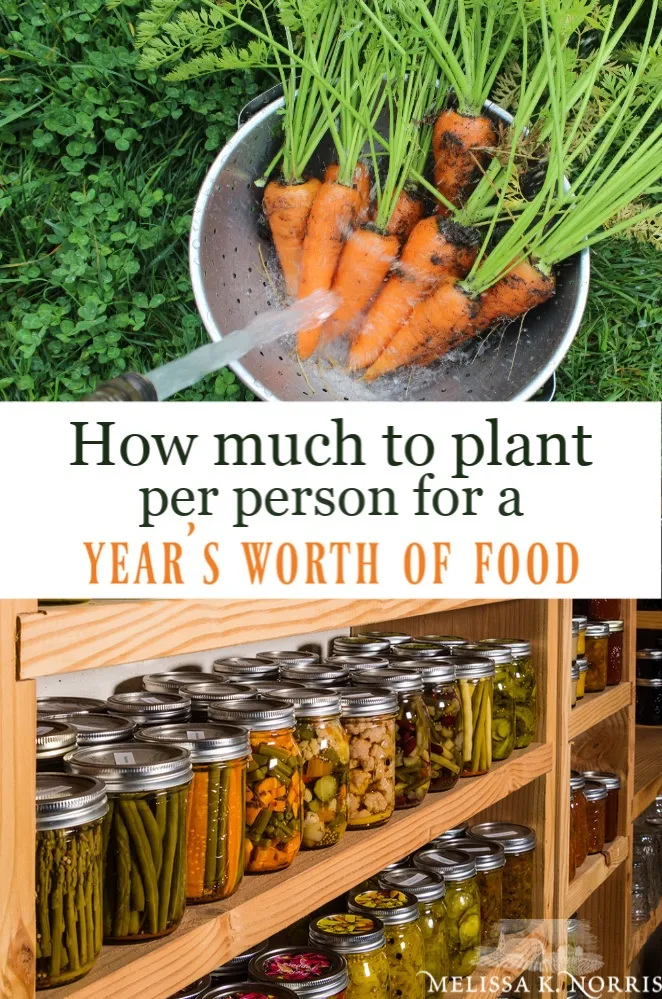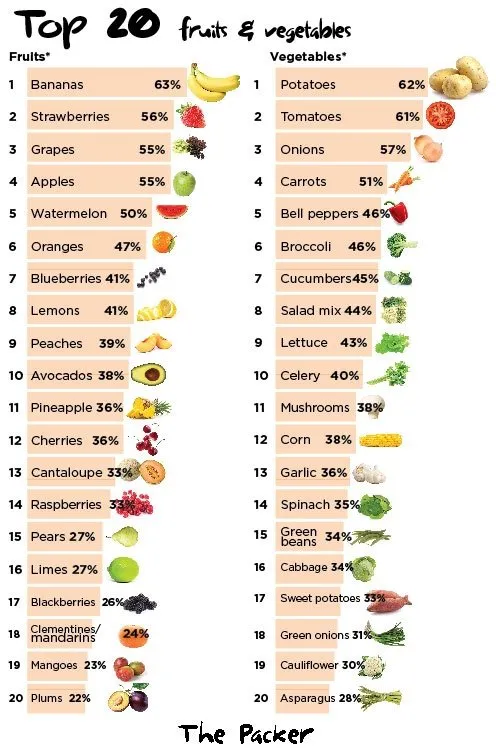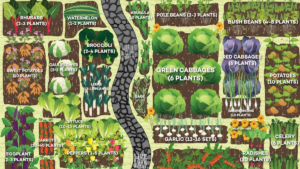How many plants per person for a sustainable and self-sufficient lifestyle needed. From vegetables to fruits, learn how to plan your garden for year-round nourishment.
Introduction: How Many Plants Per Person
Have you ever dreamt of stepping into your backyard and harvesting all the fresh, delicious veggies you need? The satisfaction of growing your own food is both rewarding and empowering. But if you’re new to vegetable gardening, a big question probably looms: just how big should my garden be? Let’s break it down and figure out how many plants you need to feed yourself (and maybe even your family!).
Understanding Your Garden’s Purpose
Why Grow Your Own Food?
Before we dive into numbers, let’s talk about the ‘why’. Here are some compelling reasons to grow a veggie garden:
- Unmatched Freshness: Nothing beats the taste of produce ripened on the vine and picked at the height of flavor.
- Healthier Choices: You have complete control over what goes into your food – no pesticides or weird chemicals.
- Save Money: Gardening can cut down on your grocery bill, especially during peak growing seasons.
- Sustainability: Reduce your carbon footprint by cutting down on transportation and food waste.
- Pure Joy: Gardening is good for the soul – it’s relaxing, rewarding, and connects you with nature.
Factors to Consider
The answer isn’t a simple one-size-fits-all. Here’s what you need to consider:
- Dietary Needs: Are you a veggie enthusiast or a meat-and-potatoes person? Do you favor certain vegetables over others?
- Plant Type: Some plants, like tomatoes or zucchini, produce a lot throughout the season. Others, like carrots or radishes, are a one-time harvest.
- Storage and Preservation: Will you be enjoying your harvest fresh, or are you into canning, freezing, or other preservation methods?
- Gardening Space: How much room do you actually have available for your garden?
A Plant-by-Plant Guide
Let’s look at some popular garden vegetables and general recommendations for plants per person:
- Beans (bush): 5-10 plants
- Beans (pole): 3-5 plants
- Beets: 10-15 plants
- Broccoli: 2-3 plants
- Cabbage: 2-3 plants
- Carrots: 20-30 plants
- Corn: 10-15 plants (but plant in blocks for better pollination)
- Cucumbers: 2-3 plants
- Lettuce: 5-10 plants (succession plant for continuous harvest)
- Peppers: 2-3 plants
- Potatoes: 10-15 plants
- Tomatoes: 3-5 plants
- Zucchini/Summer Squash: 1-2 plants

Vegetables: The Backbone of Your Garden
Leafy Greens
How Many Leafy Greens Do You Need?
Leafy greens like spinach, kale, and lettuce are essential for a balanced diet. On average, plan for about 5-10 plants per person. These can be grown in succession for a continuous harvest.
Root Vegetables
Carrots, Beets, and Potatoes
Root vegetables are staples in many diets. For carrots and beets, aim for 10-15 plants per person. Potatoes are more productive, with about 2-5 plants per person sufficing.
Tomatoes and Peppers
Essential for Flavor
Tomatoes and peppers are versatile and widely used. For tomatoes, 3-5 plants per person should provide a generous supply. Peppers have a similar requirement, with 3-5 plants per person.
Fruits: Sweetening the Deal
Berry Bushes
Berries are not only delicious but also packed with nutrients. For strawberries, plan for about 10-20 plants per person. For larger berries like raspberries and blueberries, 2-3 bushes per person are recommended.
Fruit Trees
Fruit trees can be a long-term investment in your garden. One tree can produce a substantial amount of fruit, but having 2-3 trees of different varieties can ensure a more extended harvest period.
Herbs: The Finishing Touch
Herbs are easy to grow and require less space. For most households, 1-2 plants of each desired herb type are sufficient. They can also be grown indoors on windowsills.
Planning Your Garden
Succession Planting and Crop Rotation
To maximize your garden’s yield, practice succession planting and crop rotation. This ensures a continuous supply of vegetables and maintains soil health.
Companion Planting
Companion planting can enhance growth and protect your plants from pests. For example, planting basil near tomatoes can improve their flavor and deter pests.
What are the most commonly grown vegetables in the us?
The most commonly grown vegetables in the United States include a variety of staples that are popular both for their nutritional value and their versatility in cooking. According to the sources provided, the following vegetables are among the most commonly grown and consumed in the US:
- Tomatoes – Tomatoes are by far the most popular vegetable grown in American backyards. They are appreciated not only for their nutritional benefits, such as helping to protect against high blood pressure and heart disease, but also for their high water content, which makes them a filling food.
- Potatoes – Potatoes are another staple in the American diet, widely used in various dishes. They are the most consumed vegetable in the United States. Idaho is known as the country’s leading producer of potatoes.
- Onions – Onions are favored for their health benefits and are a fundamental base for various dishes. They are the fifth most produced vegetable in the country.
- Carrots – Carrots are consistently popular, known for their health benefits such as balancing blood sugar while being highly nutritious. California grows 85% of the carrots in the United States.
- Sweet Peppers – Sweet peppers are commonly grown in American gardens. They require less space compared to other vegetables and can even be grown in containers or planters.
- Cucumbers – Cucumbers are also widely grown in the US, though a significant portion is imported from Mexico. They prefer warm temperatures and are excellent for trellising due to their climbing nature.
- Leafy Greens – Various types of leafy greens are grown, with lettuce being particularly popular. Iceberg lettuce is the most consumed lettuce variety despite its higher risk of contamination.
- Squash – Squash is a warm-weather crop that takes up more room but can be very productive under the right conditions.
- Sweet Corn – Sweet corn is another popular choice in American gardens. It is wind-pollinated and should be planted in blocks to aid in pollination.
These vegetables are not only popular for personal consumption but also play a significant role in the agricultural economy of the United States. The choice of vegetables grown by individuals often reflects broader consumption trends seen across the country.
What are the most consumed vegetables in the us?
The most consumed vegetables in the United States are characterized by their widespread use in various dishes and their nutritional benefits. Based on the provided sources, here is a detailed overview of the most consumed vegetables in the U.S.:
- Potatoes – Potatoes top the list as the most consumed vegetable in the U.S. They are versatile and can be used in numerous dishes, making them a staple in American diets. Potatoes come in various varieties, including Russet, Red, Yellow, and Sweet potatoes, each offering unique flavors and nutritional values.
- Tomatoes – Although botanically classified as a fruit, tomatoes are commonly consumed as a vegetable. They are one of the top consumed produce products in the country, known for their health benefits, such as helping to potentially reduce blood pressure.
- Onions – Onions are essential in many culinary dishes and are favored for their health benefits. They are the fifth most produced vegetable in the U.S., with over 7 billion pounds consumed annually.
- Lettuce – Lettuce, particularly iceberg lettuce, is widely consumed due to its crunchy texture, which is favored in salads and burgers. Despite being at a higher risk of contamination, it remains popular and is consumed extensively across the country.
- Carrots – Carrots are consistently popular in the U.S., known for their nutritional benefits, such as balancing blood sugar. They are highly nutritious and are predominantly grown in California, which produces 85% of the carrots in the U.S..
- Peppers – Bell peppers are used extensively as a flavorful addition in various recipes. Despite a decrease in availability in 2023 due to poor weather conditions, their demand has persisted.
- Cucumbers – Cucumbers are also widely consumed, though a significant portion is imported from Mexico. They are favored for their freshness and are often used in salads and as snacks.
- Celery – Celery is known for its crisp texture and is often used in salads, soups, and snacks. It is one of the popular vegetables in the U.S., appreciated for its low calorie and high fiber content.
- Broccoli – Broccoli is another popular vegetable, known for its nutritional benefits, including high vitamin C and K content. It is commonly used in a variety of dishes, from salads to stir-fries.
- Spinach – Spinach is widely consumed for its health benefits, including high levels of iron and calcium. It is used in salads, smoothies, and as a cooked vegetable.
These vegetables not only dominate the market in terms of consumption but also play a significant role in the agricultural economy of the United States. Their popularity is reflected in their extensive use in households across the country, making them integral components of the American diet.

What are the most consumed fruits in the us?
The most consumed fruits in the United States are characterized by their popularity and versatility in various dishes and snacks. Based on the provided sources, here is a detailed overview of the most consumed fruits in the U.S.:
- Bananas – Bananas are the most consumed fruit in the United States. They are favored for their affordability, taste, and nutritional benefits, including high fiber content and essential vitamins such as B6 and C. Bananas are versatile and can be used in cereals, smoothies, and as a natural alternative to processed sweets.
- Apples – Apples are another highly consumed fruit, known for their health benefits and versatility. They can be eaten fresh, cooked, or juiced, and are a staple in many American diets. Apples are particularly noted for their convenience as a portable snack and their variety of flavors and textures.
- Strawberries – Strawberries rank high in consumption due to their sweet flavor and nutritional benefits, which include high levels of antioxidants and vitamin C. They are commonly used in desserts, salads, and as a fresh snack.
- Grapes – Grapes are popular both as fresh fruit and in dried forms such as raisins. They are appreciated for their natural sweetness and health benefits, including their role in heart health due to their high antioxidant content.
- Oranges – Oranges are widely consumed primarily in the form of orange juice but also as fresh fruit. They are a key source of vitamin C and are often associated with boosting immune system function.
- Watermelons – Watermelons are consumed extensively, especially in the summer, for their refreshing properties and high water content. They are also used in beverages and cocktails.
- Melons – Other melons, such as cantaloupe and honeydew, are also popular, particularly for their hydrating properties and sweet flavor, making them a favorite in fruit salads and as snacks.
- Peaches – Peaches are enjoyed for their sweet, juicy flavor and are often used in desserts, smoothies, and salads, or eaten fresh.
- Lemons and Limes – These citrus fruits are commonly used as flavor enhancers in drinks and dishes rather than consumed alone. They are valued for their acidic, fresh taste and vitamin C content.
- Pineapples – Pineapples are popular for their tropical flavor and are often used in cooking, baking, and in beverages, as well as eaten fresh.
These fruits are not only popular for their flavors but also for their health benefits, including vitamins, minerals, and antioxidants, which contribute to a balanced diet. Their widespread availability and versatility in various culinary uses keep them at the top of the list in American households.
How to calculate the amount of vegetables needed for a family of four?
To calculate the amount of vegetables needed for a family of four, consider the following factors:
- Garden size and space: The available space will determine how many plants you can grow. A general guideline is to allocate 100-200 square feet of garden space per person, so for a family of four, a garden of 400-800 square feet should suffice.
- Vegetable preferences: Choose vegetables that your family enjoys eating and will consume regularly. Focus on the most commonly grown and consumed vegetables like tomatoes, peppers, potatoes, beans, squash, and leafy greens.
- Yield per plant: Different vegetables have varying yields per plant. For example, you may need 3-5 pepper plants per person, but only 2-3 squash plants for a family of four. Refer to planting charts for specific yield information.
- Succession planting: Some crops like beans, peas, and lettuce can be planted in succession every 2-3 weeks to extend the harvest. Factor in multiple plantings when calculating total plants needed.
- Preservation plans: If you intend to preserve the harvest by canning, freezing, or dehydrating, you’ll need to plant more than if only eating fresh produce. The calculator in assumes you will preserve excess harvest.
- Planting seasons: Consider how many times you’ll plant throughout the year. You can have spring, summer, and fall gardens to maximize harvest.
- Sharing excess: Be prepared to share extra harvest with neighbors or friends if your plants produce more than expected.
As a starting point, here are recommendations for common vegetables for a family of four:
- Tomatoes: 5 plants
- Peppers: 12 plants
- Potatoes: 60-80 plants
- Beans (bush): 40-60 plants
- Squash (summer): 4-8 plants
- Lettuce: 24-36 plants
Use these numbers as a guideline and adjust based on your family’s preferences and garden space. Over time, you’ll gain experience to refine the amounts you need to plant each season. Keeping a garden journal can help track and optimize your planting plans.
What are the benefits of having plants in your home?
Based on the provided search results, there are numerous benefits to having plants in your home:
- Improved air quality – Houseplants can absorb toxins and pollutants from the air, such as formaldehyde and benzene, while releasing oxygen through photosynthesis. This helps purify the air indoors.
- Reduced stress and anxiety – Being around plants has a calming effect and can lower stress and anxiety levels. Caring for plants can be therapeutic and provide a sense of accomplishment.
- Boosted mood and creativity – The presence of plants indoors is linked to increased positive emotions, comfort, and creative thinking. Interacting with plants can be uplifting.
- Better focus and productivity – Studies have found that having plants in workspaces can sharpen attention, improve concentration, and boost productivity by up to 15%.
- Faster recovery from illness – Research indicates that patients with a view of plants or nature can recover faster from surgery or illness, needing less pain medication.
- Increased humidity – Plants release water vapor, which can increase indoor humidity and ease dry skin and respiratory issues, especially in dry climates or during winter.
- Attractive decor – Houseplants make for beautiful, natural home decor that can instantly liven up a space.
- Sense of connection to nature – Caring for plants indoors provides a way to connect with nature, which humans have an innate desire for (known as biophilia). This can be especially beneficial when spending long periods indoors.
- Potential allergy relief – While some plants may trigger allergies, most common houseplants produce little airborne pollen. Overwatering should be avoided to prevent mold growth.
- Noise reduction – Plant foliage can absorb sound, helping to reduce background noise levels in a space.
In summary, having houseplants offers a wide array of benefits for physical health, mental well-being, and overall quality of life when spending time indoors. Even just a few plants can make a positive impact.
Conclusion: How Many Plants Per Person
Knowing how many plants per person you need is the first step toward a successful and sustainable home garden. By understanding the requirements for vegetables, fruits, and herbs, you can plan a garden that meets your household’s needs. Remember, gardening is a learning process, and each season brings new insights and opportunities for growth.
